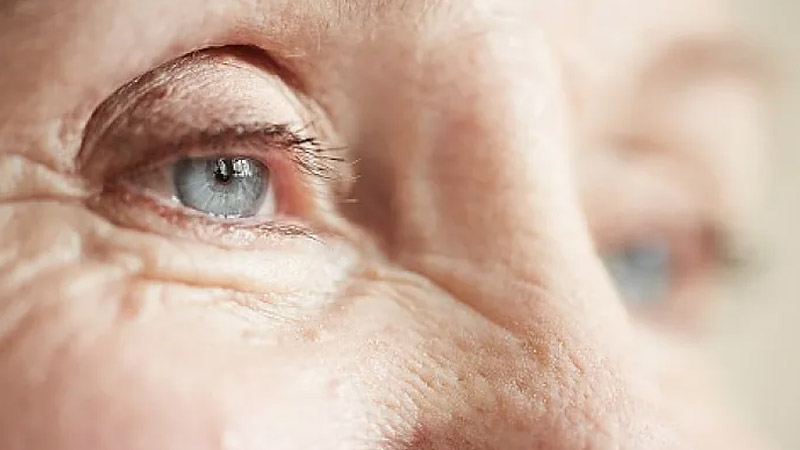A ground-breaking new therapy for cataracts has shown very encouraging results in laboratory testing, raising the prospect that the ailment, which is presently only treatable via surgery, may soon be treated with medications. Investigative Ophthalmology and Visual Science, a peer-reviewed publication, has published the findings.
The most common cause of blindness and visual impairment globally, cataracts affect 65.2 million people worldwide, according to the World Health Organization (WHO). A cataract is a clouding of the lens of the eye that results from the lens’s proteins becoming disorganized, which causes protein clumps to develop and scatter light and significantly impair retinal transmission.
This often happens with aging, but it may also be brought on by smoking, certain drugs, medical problems including diabetes, overexposure to the sun, or damage to the eye. By replacing the lens with a synthetic one, surgery may treat the disease.
Advanced optical tests have been conducted on an oxysterol compound that had been suggested as an anti-cataract medication by a group of international scientists led by Professor Barbara Pierscionek, Deputy Dean (Research and Innovation) in the Faculty of Health, Education, Medicine, and Social Care at Anglia Ruskin University (ARU).
Oxysterol, a substance that is an oxygenated derivative of cholesterol, participates in the control and transportation of cholesterol. This indicates that the lens’s protein organization is being rebuilt, which will improve its ability to focus. A decrease in lens opacity in 46% of instances corroborated this.
35 wild mice and mice genetically modified to acquire lens cloudiness by a change of their B-crystallin or A-crystallin proteins were studied by the researchers.
The scientists gave one drop of the oxysterol substance VP1-001Trusted Source straight into the ocular surface of the right eye of 26 mice. They simultaneously injected a neutral cyclodextrin drop into their left eyeballs. In the control group of nine mice, no treatment was given.
The A- and B-crystallin mutations, which often result in cataracts with age, were the treatment’s focus. Refractive index profiles, a crucial optical characteristic required to maintain high focusing capability, improved after treatment with the oxysterol compound VP1-001 in 61% of lenses. Additionally, they noticed a 1.0 improvement in the treated mice’s 46% opacity grade.
This research has shown the beneficial benefits of a substance that had been offered as an anti-cataract medicine but had never been tested on the optics of the lens, according to Professor Pierscionek of Anglia Ruskin University (ARU), who is also a member of the Medical Technology Research Centre. It is the first study of its sort ever conducted.
When compared to eyes with the same type of cataract that weren’t treated with the compound, it has been demonstrated that there is a notable difference and improvement in optics.
Improvements were shown in certain cataract types, but not others, suggesting that this could be a therapy for particular cataracts. This shows that while creating anti-cataract drugs, differences between cataract types may be necessary. It is a significant step toward using medications rather than surgery to treat this extremely common condition.
Cataracts Diagnosis
To determine whether you have a cataract, your doctor will review your medical history and symptoms, and perform an eye examination. Your doctor may conduct several tests, including:
- Visual acuity test. A visual acuity test uses an eye chart to measure how well you can read a series of letters. Your eyes are tested one at a time, while the other eye is covered. Using a chart or a viewing device with progressively smaller letters, your eye doctor determines if you have 20/20 vision or if your vision shows signs of impairment.
- Slit-lamp examination. A slit lamp allows your eye doctor to see the structures at the front of your eye under magnification. The microscope is called a slit lamp because it uses an intense line of light, a slit, to illuminate your cornea, iris, lens, and the space between your iris and cornea. The slit allows your doctor to view these structures in small sections, which makes it easier to detect any tiny abnormalities.
- Retinal exam. To prepare for a retinal exam, your eye doctor puts drops in your eyes to open your pupils wide (dilate). This makes it easier to examine the back of your eyes (retina). Using a slit lamp or a special device called an ophthalmoscope, your eye doctor can examine your lens for signs of a cataract.
- Applanation tonometry. This test measures the fluid pressure in your eye. There are multiple different devices available to do this.
Lifestyle and home remedies
To deal with symptoms of cataracts until you decide to have surgery, try to:
- Make sure your eyeglasses or contact lenses are the most accurate prescription possible
- Use a magnifying glass to read if you need additional help reading
- Improve the lighting in your home with more or brighter lamps
- When you go outside during the day, wear sunglasses or a broad-brimmed hat to reduce glare
- Limit your night driving
Self-care measures may help for a while, but as the cataract progresses, your vision may deteriorate further. Consult a medical professional.


